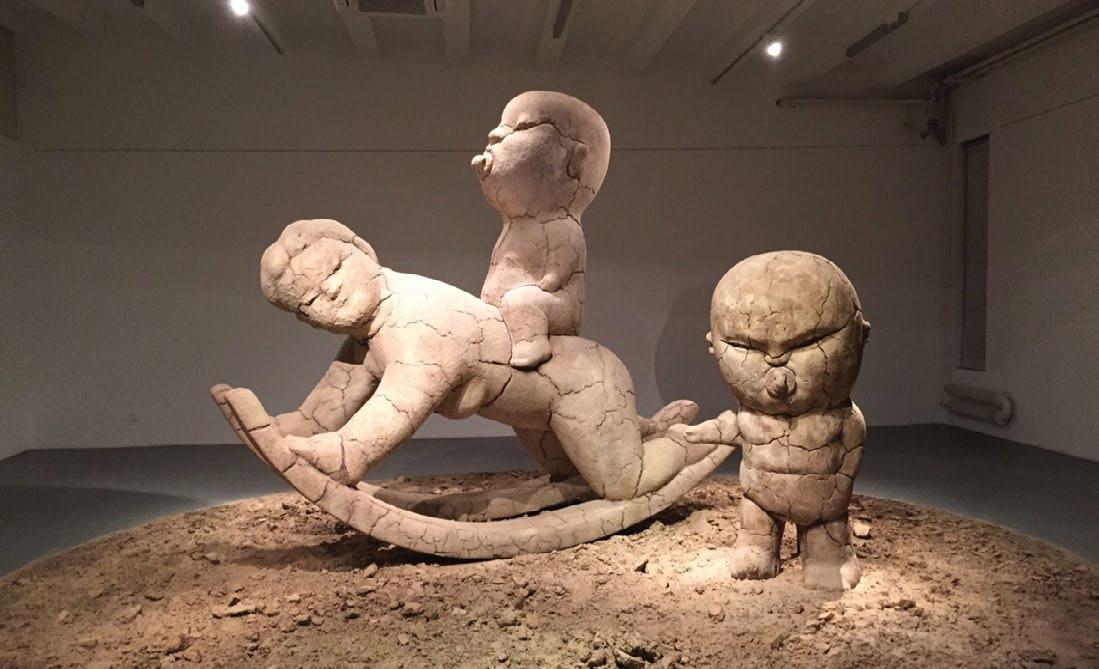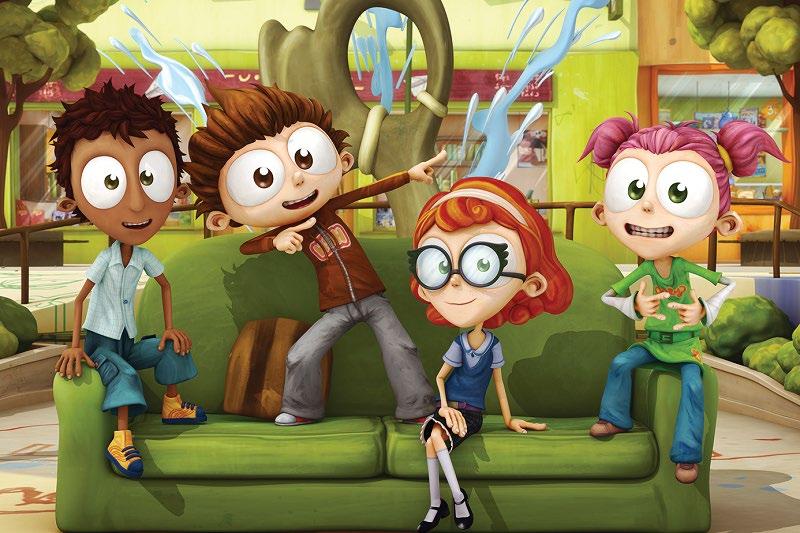previous page
TOC
ream
Studio Spotlight Mercury Filmworks founder and CEO Clint Eland offers his take on 2020’s animation landscape and insights into the new work-from-home era.
E
ver since it was founded in 1997, Canadian animation house Mercury Filmworks has been a hotbed of artistic and commercial activity. Working on shows as diverse as Disney’s Mickey Mouse, Stars vs. The Forces of Evil, Tangled: The Series, If You Give a Mouse a Cookie and Guardians of the Galaxy, the studio has expanded its reach and currently employees about 340 employees at its Ottawa home base, as well as overseeing Mercury Filmworks Europe in Dublin, Ireland. Studio founder and CEO Clint Eland was kind enough to answer a few of our questions in time for the arrival of the new fall market season. Animag: Can you tell us how Mercury Filmworks is faring during this most unusual year? Clint Eland: 2020 has been a great year for the animation industry overall. At Mercury Filmworks, our slate comprises a strategic balance of original series from our talented in-house creators and external projects that we collaborate on with our partners. Both strategies continue to work well for us as we attempt to broaden the genres of shows we work on while focusing on our creative process. In the work-for-hire arena, the larger entertainment studios have doubled down on animation, resulting in an abundance of new and exciting opportunities. We came into the year strong and continue to be so while navigating the current pandemic. Some of our current work for hire projects include Kid Cosmic for Netflix and Hilda season two with our good friends at Silvergate Media. You were recently quoted in an article about studio productivity and how it has slowed down during this work-from-home era. Can you elaborate on that? Navigating production in the COVID-19 landscape resulted in a slow-down in our output in the short term — until recently we averaged approximately 70% efficiency overall with www.animationmagazine.net
TOC
some departments doing very well, while others struggled a little more. We’ve been very good at applying innovation and supporting our teams, so we’re seeing that number lift. The silver lining is that this emergency transition has created opportunities to re-think how our business operates and the technologies we can leverage to enable the workforce to have more options and achieve a healthier work/life balance in a post-COVID workplace. We have proven that working from home does work in a state of emergency, and now we are looking ahead to how it can be effective postCOVID. There are three key areas that we are focused on – communication, personal development, and the business of animation. I’ll expand a little here: Communication Is King: There is nothing more powerful than putting people in a room to communicate — it underpins learning, ideation and teamwork. Face-to-face communication builds trust and drives participation. Technology has been a game-changer and enabled the work-from-home option, but we all lose out on the opportunity to connect on a human level with our team members. Technology to make work-from-home viable is fundamentally about trying to close the gap between communicating in person and communicating remotely. The very need for a solution highlights the problem. Developing People: Our employees are our most important asset. How do we continue our history of innovation and performance if our ability to invest and develop our team is severely mitigated by diluted communication and the loss of the human connection? I worry about artists missing the opportunities to connect meaningfully with
22
colleagues and mentors. How do we get better? How do our careers progress? The Business of Animation: As a studio, yes, we have been operating at more or less 70% efficiency since we transitioned to work-fromhome. It is important to know that a large part of our organization is production, which has a fundamentally different scale in terms of team size, communication and organizational requirements than pre-production. Depending on each studio’s unique makeup, one might fare better or worse than another in the current situation. Here at Mercury, some people and departments are doing really well. Others are not, and the reasons for that are unique to each situation and often not about any one thing. What we do know is that we need to continue to learn and adapt. Surviving and maintaining our competitive advantage are not just a management problem to solve. The foundation of every solution comes from our employees and artists. Their teamwork, work ethic, organization, and their drive to be better tomorrow than they were today is what will make WFH a viable tool with a permanent place in the creative process. What are some of the projects you are currently working on? We are currently working on several projects with our partners at Disney, Netflix, Amazon and Apple. In addition to the projects already
Clint Eland
november 20
previous page

















